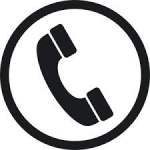The don’ts of social media
 We hear and read all the time of how important it is to have a social media presence. Using Facebook, Twitter and LinkedIn will help give you more exposure. However, in the August 25th Chicago Tribune business section, columnist Rex Huppke of “I just Work Here”, writes about venting on anonymous websites. I agree and suggest taking it another step for Facebook which many folks, especially potential employers, read.
We hear and read all the time of how important it is to have a social media presence. Using Facebook, Twitter and LinkedIn will help give you more exposure. However, in the August 25th Chicago Tribune business section, columnist Rex Huppke of “I just Work Here”, writes about venting on anonymous websites. I agree and suggest taking it another step for Facebook which many folks, especially potential employers, read.
Below are what we might want to avoid doing on Facebook. Do not:
• Post too much personal stuff – it gives the impression you have a tremendous amount of free time – while at the office
• Post too revealing a personal picture, low cut tops or for men, hairy chests in skinny swim trunks (These belong on private sites or in People magazine.)
• Constantly brag about your business achievements
• Offer condescending advice
• Make fun of someone or something – leave that to Vanity Fair.com or People magazine
• Post negative comments in general
Keep your remarks positive and you will create engagement while providing a human touch which is what we want.












